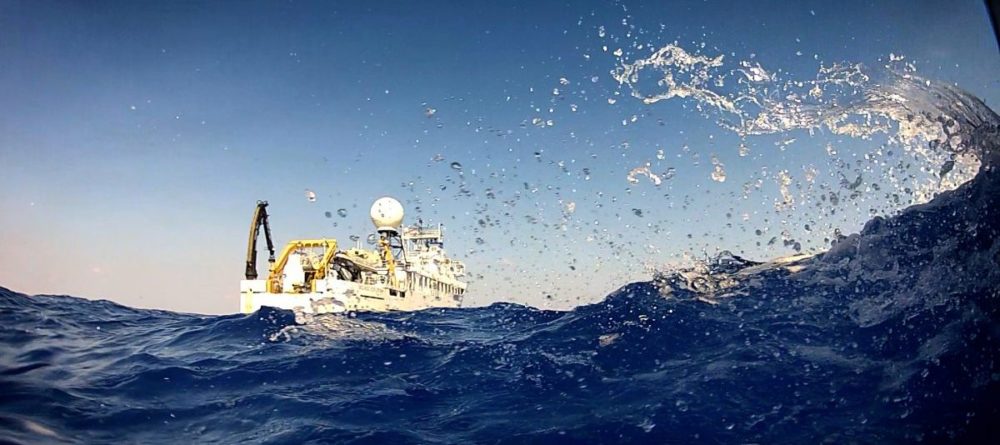UPDATE, August 2, 2017: A team led by researchers at Louisiana State University today confirmed the largest Gulf of Mexico dead zone since standardized measurement began in 1985.
UPDATE, June 20, 2017: The scientific team led by NOAA released its official 2017 Gulf of Mexico dead zone prediction today. Confirming my fears below—and then some—they estimate this summer’s Gulf dead zone will be the third largest since measurements began in 1985. If they are correct, the dead zone will measure approximately 8,185 square miles, about the size of New Jersey, and will threaten the Gulf’s economically important fish and seafood industries, including its shrimp fishery.
Summer is almost here, and you know what that means. Sun, sand, and…a watery wasteland devoid of all life? Yep, this is the time each year when a team of federal and university scientists predicts the size of the so-called dead zone that will develop in the Gulf of Mexico later in the summer. We’re waiting for that official prediction, but based on federal nitrate flux data and Midwest weather patterns this spring, it seems likely that it will be bigger than usual.
That means a swath of marine habitat considerably larger than the state of Connecticut could be lifeless by summer’s end—a haunting prospect for coastal ecosystems, fisheries, and the men and women who earn their livelihoods from them. And the Trump administration’s budget proposal and general antagonism toward science and environmental protection are likely to make the problem worse in the future.
Dead zones don’t talk
Marine and coastal dead zones are the result of a phenomenon called hypoxia—a state of low dissolved oxygen that occurs when excess pollutants, such as nitrogen and phosphorus, accumulate in bodies of water. These nutrients feed blooms of algae that, when they die and decompose, deplete the oxygen in the surrounding water. Hypoxia is a silent killer, suffocating organisms that can’t escape the low-oxygen zone quickly enough, and causing others to flee.
As we wrote a year ago when the National Oceanographic and Atmospheric Administration (NOAA) predicted an “average” (roughly Connecticut-sized) Gulf dead zone, even average is not the same as normal. Nitrogen and phosphorus can come from many sources, but the largest are due to human activity, including sewage discharges and fertilizers from farm fields running off into rivers and streams. In 2010, researchers at the University of Illinois showed that the problem of runoff from industrialized, corn-and-soybean intensive agriculture, with its system of underground drainage channels, dwarfs the impact of cities and other nutrient sources in the Midwest. Essentially, each year the Mississippi River and its many tributaries meandering through the Corn Belt quietly funnel a vast amount of agricultural pollution into the Gulf.

Image courtesy National Oceanographic and Atmospheric Administration
April showers bring May flowers, but what do May downpours bring?
The size of the dead zone in any given year is dependent not just on how much fertilizer was applied to fields in the drainage area, but also on the amount of rainfall available to carry it from the land into the rivers and on to the Gulf. This spring has been a wet one in the Midwest, and the drenching rains and widespread flooding that hit parts of the region in late April and continued into May have created ideal conditions for a large flush of nutrients downstream.
The two graphs below from the US Geological Survey (USGS)—which monitors stream flow and nitrate levels in rivers and streams—show how the nitrate “flux” in the Mississippi River basin in May 2017 compares with previous years, and how the actual size of the dead zone tracks those fluxes each year. It’s easy to see the contrast between a wet year like this one and, say, the devastating drought year of 2012.
These are preliminary data that the scientific team led by NOAA will use in making its dead zone prediction this month.


The solution to dead zone pollution…
Nope, it’s not dilution. Even very large bodies of water like the Gulf of Mexico aren’t safe from this annual, preventable destruction. And recurring dead zones and toxic algae blooms also plague other large water bodies including the Chesapeake Bay and Lake Erie. Just today, NOAA predicted a larger-than-average dead zone in the Chesapeake Bay this summer.
And there’s more bad news—climate change is likely making these problems worse. A study published earlier this year examined runoff data from the drought year 2012 and the following, wetter year, to show how “weather whiplash” can increase the flow of nitrate into the Gulf. So we can expect more of the same as the cycle of Midwestern floods and droughts becomes more intense and erratic in the future.
In addition, as the climate heats up, shallow waters like the end of Lake Erie that abuts Toledo, Ohio, will be warmer and thus will likely suffer more toxic algae blooms that taint the city’s drinking water, causing recurring health risks and economic pain.
It’s clear that decreasing the size and severity of algae blooms and dead zones will require significant reductions to current rates of fertilizer runoff in the Midwest. And fortunately, there is bountiful evidence about how to do that on the region’s farms. As we’ve documented in two recent reports, for example, innovative farming practices such as extended crop rotations can cut fertilizer use significantly, and planting perennial prairie strips in and around cropland can dramatically reduce the amount of nitrogen that escapes from those lands into waterways. Even better, we’ve shown that such practices and systems are also good for farmers’ bottom lines.
Budget cuts could grow the dead zone (and shrink opportunities for farmers)
But just when pollution-cutting practices are showing such promise and are needed more than ever, the Trump administration’s proposed Department of Agriculture (USDA) budget could hamstring the department’s efforts to help farmers implement them, cutting programs that deliver financial and technical support for farmers.
Moreover, proposed major cuts at NOAA, the USGS, and the Environmental Protection Agency would hamper the ability of scientists at those agencies to study and remediate the Gulf dead zone and other water bodies that suffer from hypoxia and toxic algal blooms due to fertilizer pollution.
Water pollution from agriculture has real impacts on farmers, coastal and lakeshore communities across the country, and millions of Americans. Even as we wait to see if this year’s problem in the Gulf will be as bad as we think, UCS is advocating for policies and budget investments that could truly tackle the problem in future years.
Join us by calling on Congress to reject the Trump administration’s unacceptable budget cuts at the USDA, and instead vote to fully fund proven programs that keep our water clean, improve farmers’ livelihoods, and help hungry families.

